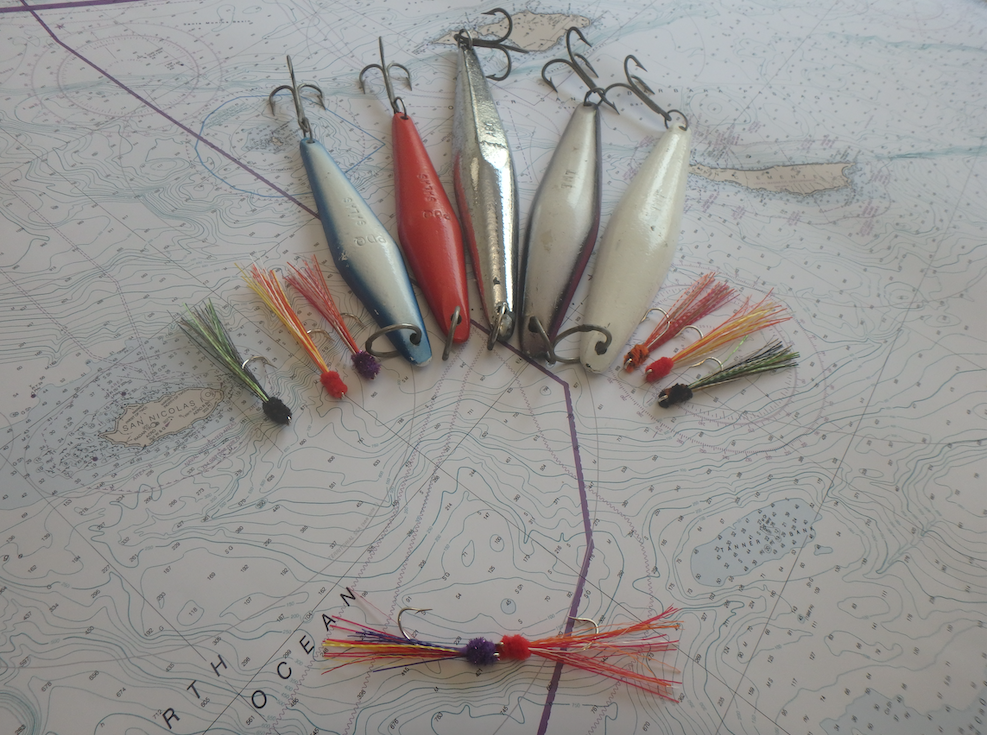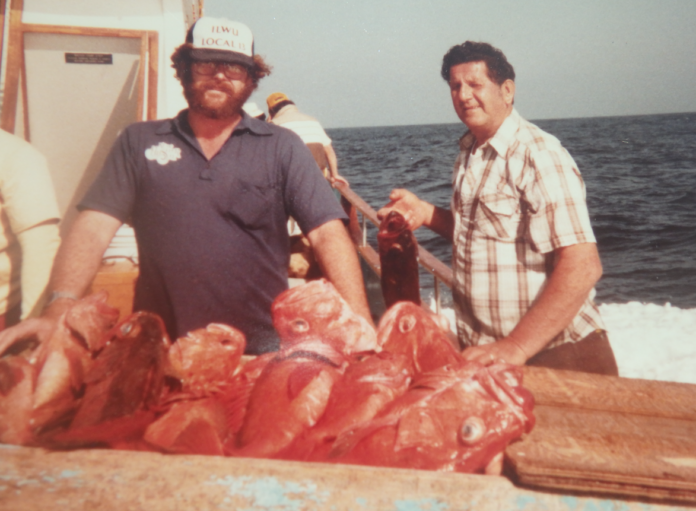
BY BUD CHADDOCK OF SQUIDME TACKLE
SPECIAL TO WESTERN OUTDOOR NEWS
Sportfishing adventures in the 1970’s through the early 1980’s brings back such vivid memories for those of us fortunate enough to have lived through this era. In my recollection, I recall working on many party boats such as the New Hustler II built by Bob Stapp of Seaway Boats in San Pedro. The New Hustler II was owned and operated by my old boss George Mio who I had the pleasure of knowing for decades. John Pittman, on the ever-so-fast (at the time) Wild Wave, was like a rocket ship compared to many boats in the fleet due to its PT boat hull design. Don Hefner in Port Hueneme built the Wild Wave with his son Bill Hefner at his side. I am fortunate again to be able to call John Pittman and Bill Hefner my friends after all these years. I can still hear the V-12 Jimmies at 1650 to 1850 RPM roaring in the cold darkness with the exhaust wafting in the air as we went towards the promised land of deep-water rockfish. I also remember fishing with my childhood friends Mike, Carl, Paul, and Pat on the Gentleman, captained by Steve Corby out of Paradise Cove at spots outside the deep hole and Mugu Canyon. Each of these boats were great in their day, and one still operates under a different name. They fished in the winter months, beginning in October through late April when the spring bite came on, then continued through the month of June. The captains targeted rockfish at the outer islands and banks offshore, and this was terrific fishing if the weather cooperated to make such a journey.
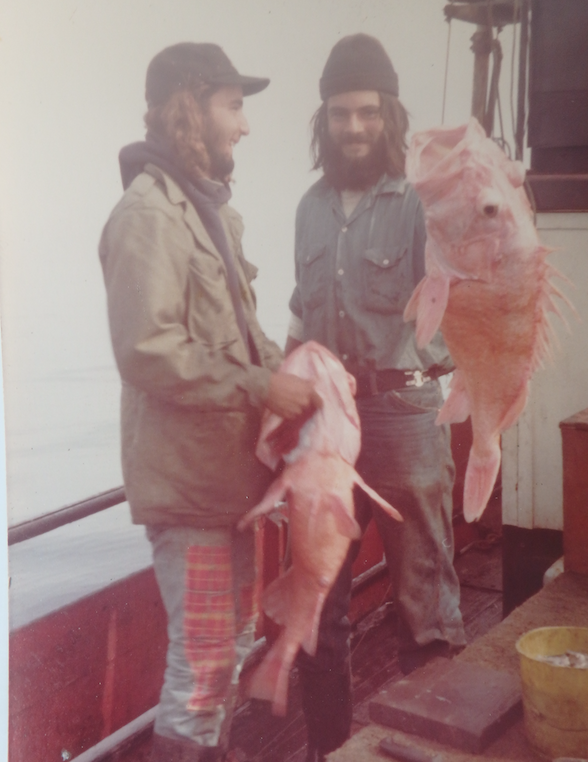
The offshore areas we would fish were Cherry Banks, Potato Banks, Hidden Reef, Osbourne Bank, and when the weather was not as favorable, maybe Santa Barbara Island and Catalina as a fall back when we needed some protection from the wind. The Wild Wave would make a journey to Cherry Bank in about 5 ½ hours to 6 hours. The New Hustler II would take a little longer, over 7 hours on good days of weather. In addition, the Freedom would make the run with over 40 people on it to keep us company with Pat Conklin or Paulus Jernstrom at the helm. Cherry Bank was the destination of choice since not many boats would make the long journey to get there. This made it a great place to get quality reds, warthogs, and cowcod in its deeper 80 to 125 fathom ledges and bumps which held nice numbers and quality in size. The cows were the big bonus fish that were revered and targeted by some with larger jigs that weighed 1- to 2.5 pounds. These were Salas jigs like the ABC’s 2.5 pound, TNT’s at 1.5 pounds, and the PDQ at 1 pound, all made for jigging these depths at that time. This was kind of a new thing for some guys used to slinging ganglions with hooks baited with squid or salted mackerel and a 3– to 7-pound weight on a 9/0 to 12/0 Penn or larger Ocean City reels. These reels were sold at the Trading Post in Long Beach paired with a Saber gaff blank with a roller tip made into a rod with a rail plate on it and an extension handle. Dacron line from 80 to 100 pounds was used on these reels to give no-stretch pulling power from such depths.
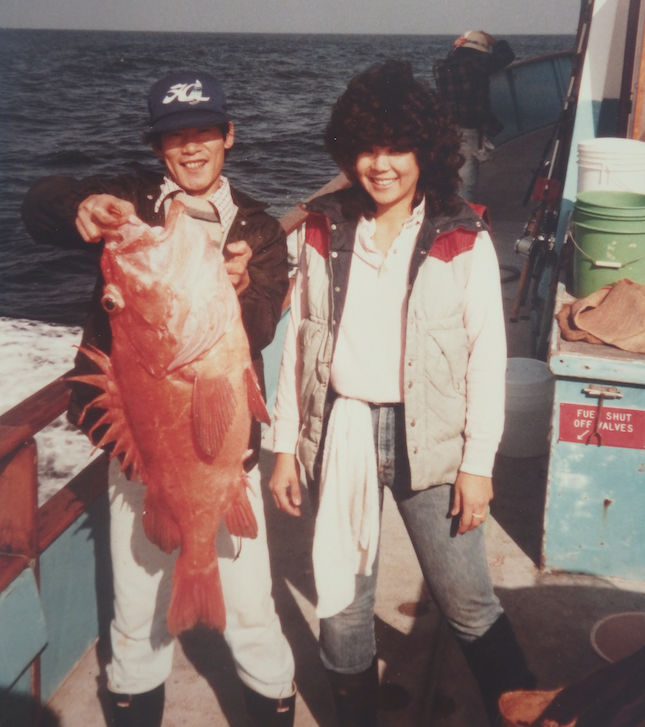
We used Penn 4/0 high-speed reels with 50-pound Dacron, a Sabre 610H rod, and small rail plate at times to use the jigs mentioned above with about 7 or 8 feet of 60-pound mono, sometimes with a dropper looped shrimp fly or two above it. Sometimes the shrimp fly would have a fillet of a small mackerel or a small rockfish fillet with the tail still attached. This was a form of light-tackle rockfish that usually produced a good chance of a jackpot cowcod for an angler who wanted to go the bow and get away from the ganglion gangs fishing around the boat. There would usually be 6 or 7 guys, hardcore anglers, that only wanted to fish this way. The trick was fishing the lightest jig you could while adjusting to the current and drift of that day: A PDQ, if one could on a calm day with light current, and a TNT, if over 100 fathoms and a little more current and wind, and finally the heavier ABC if needed. A PDQ was a good choice overall. The trick was to let it down and when you had it dialed in on depth and slow it down the last 15 fathoms with thumb pressure on the spool till it reached the bottom or if you were bit on the sink, crank it up a few turns. Lifting with a quick snap, then letting it down as it fluttered and repeat till you get bit or drift off the spot. When a cow hit you knew it! It felt like you snagged the bottom at first, then a few head shakes, and when the rod went bendo, you knew you had a long wind up with a good fish on. Usually, halfway up you would start to see the line go slack a bit and had to wind faster as the fish floated up as it filled with air. Then the tell-tale sign of bubbles and pop goes the cowcod to the top to be gaffed. If you got bit higher off the bottom on the way down, it was usually a salmon grouper which back then could be upward of 15 pounds, a chili pepper, or big widow rockfish. Also, bigger reds upwards of close to 10 pounds were possible, as most of the vermilions were over 5 pounds those days. Back then many people with their 15 fish limits would fill 2 gunny sacks, maybe 3 if you got two cowcod, some bigger reds, and maybe a bronze rockfish which we called warthogs. At the end of the day, there was 4 to 5 hours of filleting going on in the back deck with many gulls following you home and getting their fill. Lots of fillets cleaned and processed with tired arms, and a restful sleep home in the bunkroom if you were a passenger. Others would munch a hamburger, down a beer, or play a card game looking for action on the way back to the dock. This was a great way to fish that was different back then with jigs in deep water for many. Thereafter, many charters would only fish in this manner. I am blessed to have had so many abundant fishing trips with friends, customers, and crew.
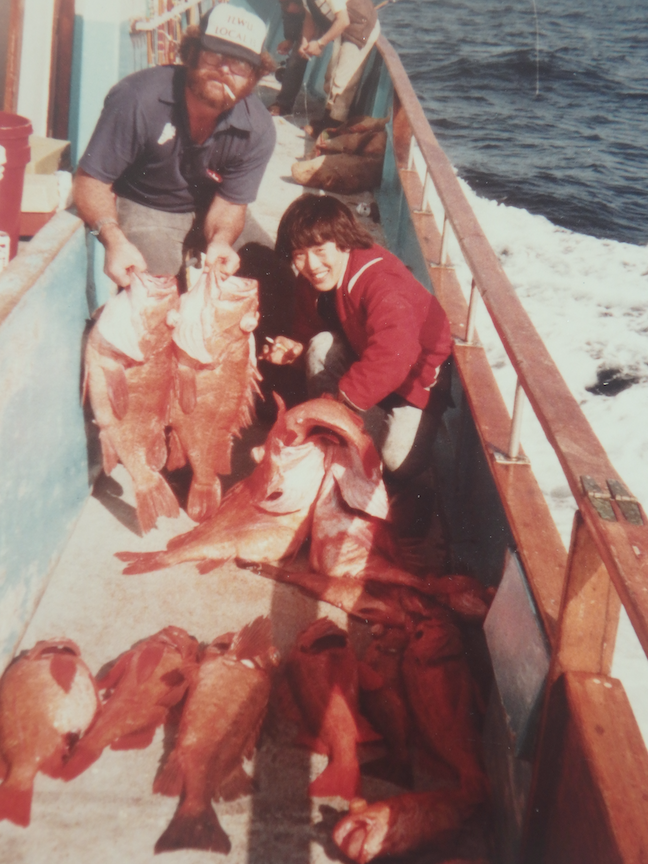
The 1970s and 1980 are provided me the opportunity to connect with people in a meaningful way, and to go home with limits of memories, not to mention the experiences which are impossible to replace. Today’s gear is much lighter overall and smaller reels can do some of the same tasks the monstrous reels did back then, we have replaced the gear, but not the memories. But that was then, and this is now. I am lucky to have seen both then and now, I guess.
Thanks to Lee Bergen’s family for some of the pictures I have used in this article. I fished commercial salmon, albacore and rock cod with him, and he was tops when it came to cod in my eyes in the commercial sense. I remember 65 lingcod on a PDQ jig up to 45 pounds at San Miquel Island one day while he was pulling the buoy lines and I was on the bow with a jig.
Now go jig up some cod and make a memory. Just remember, smaller fish don’t generally eat the jigs of larger size as a rule. Quality versus quantity.
Now that rockfish season is open in Southern California and set to open April 1st above Point Conception, go support your local sportfishing fleet and have a new adventure.
Thanks also to Gabby Talkington of antiquelures.com for some items in the pictures.
